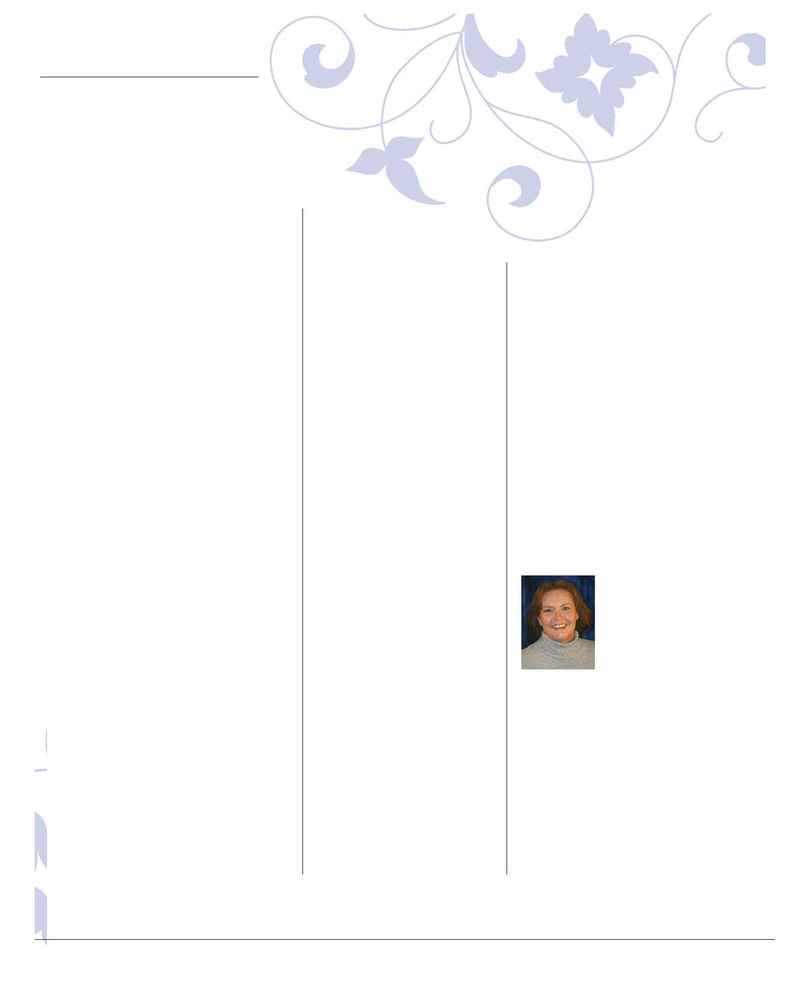
to see. This is frustrating when you
are new to the hobby. Colored pig-
ment ink is a great basic ink to
show beginners since it can be
used for many basic stamp tech-
niques, and it comes in a variety of
sizes making it a good buy for the
novice stamper.
Embossing Powder
Thermographic embossing pow-
der was invented for the printing
industry to create a raised finish
on printed materials. When this
powder is applied to wet ink it
sticks only to the ink. When the
powder is melted by a heat source
it retains the shape of the design
and leaves a raised finish.
Embossing powder comes in a
huge range of colors including
hundreds of mixtures proprietary
to each company. Many mixes
have inclusions like glitter, which
can change the normally smooth
texture of the heated powder to a
sandy surface.
Heat sources
Years ago, if you can believe it,
we used everything from hot light
bulbs to irons to coffee warmers to
get the powder to melt. Today's
stamper has it easy with the array
of heat guns available. Offer a vari-
ety of heat guns in style and price
range. I have seen many new stam-
pers blow out a heat gun by hold-
ing it with their hand over the
vents. Always train your customers
to place their hands away from the
vent at all times.
Paper
I usually like to demo emboss-
ing on a smooth, uncoated card-
stock. Novice stampers tend to slip
the stamp
on coated papers
so an uncoated paper usually
lends to success. Using uncoated
cardstock when demonstrating
also will give a less static surface so
stray powder bits are few.
The Demo
Most store owners can spot a
new customer right away. When
you do, pull out the newest pig-
ment ink color and glittery
embossing powder you have and
then simply emboss a new design.
If you love it, they will, too. Ask if
they have done much embossing
lately. This will uncover their skill
level and you can show an appro-
priate product to them.
Follow these steps for
great embossing:
Open the powder. (Glittering
powder looks great in a bright
light.)
Bring out the heat gun.
If you have a catch tray, like the
Snappy Tray, pull it out.
Choose a simple pretty design
to stamp. (Something that
appeals to everyone is natural
imagery like leaves or flowers.)
Choose a pigment ink.
Ink the stamp well.
Stamp on an uncoated card-
stock.
Place the cardstock into the
tray.
Immediately pour on the powder
(lots of powder, please).
Shake off the excess into the tray.
Heat the image by moving the
heat gun slowly across the
cardstock (about
1
/
2
inch from
the image).
Oooh and ahhh wildly (remem-
ber entertainment is every-
thing!).
Pour the excess powder back in
the jar.
Once this demo starts, it is hard
to stop. New stampers will have
many questions and experienced
folks will want to show off their
knowledge as well, by suggesting
their favorite powders and inks. All
this chatter encourages the stamp-
ing frenzy. Customers will want to
see as many powders as you will
show, so indulge them. Entertain
them!
SI
MaryJo McGraw is a nationally
known papercraft/rubber stamp
artist and best-
selling craft
author. Her
innovative tech-
niques and cre-
ative teaching
methods have
made her a much
sought after instructor at conven-
tions, workshops and stores for over
15 years.
Her books include Vintage
Greeting Cards, Greeting Card
Magic with Rubber Stamps and
Creative Rubber Stamping
Techniques. Her newest book,
Creating Cards with Scrapbook
Embellishments is due in March
from North Light Books. Visit
www.maryjomcgraw.com for proj-
ects, news and information.
CNA
Scrapbook Insider
·
3
stamping
CNA Scrapbook Insider
